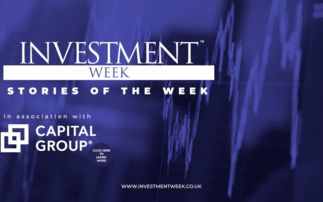Credit markets today and tomorrow
The onset of market dislocations in the first quarter of 2020 has been among the fastest and most violent ever witnessed across global credit markets. Credit spreads have widened at a faster rate than at any point in history, including the global financial crisis. Readers will be broadly familiar with the causes of market volatility:
- The global pandemic stemming from the geographic spread of the novel coronavirus
- The dramatic fall in the price of oil and energy, as the Saudis, Russians and the Organisation of the Petroleum Exporting Countries (OPEC) engaged in brinksmanship regarding the expanding oil supply
Not surprisingly, prices for risk assets have fallen precipitously in this environment. In fact, there were double-digit declines across all major equity and credit markets, with few places to turn to for shelter save for cash.
Rather than comment on short-term market developments, however, this paper focuses on what the future may hold for credit investing. Specifically, we highlight what we believe the recent moves may mean for impairment and forward-looking returns in the core credit markets of high-yield corporate bonds and floating-rate loans, while also taking a view of potential long-term shifts across credit markets more broadly.
High-yield corporate bonds
The abrupt market turn has brought an end to a remarkable rally for high-yield bonds. With the ICE BofAML US High Yield Index down sharply at -13.1% in the first quarter of 2020 compared with returns of 14.4% in 2019, many will naturally wonder how the outlook has changed for the asset class from a risk and return perspective.
Default and loss rates. In the purest sense, credit spreads reflect the potential compensation a bond investor can earn for taking on a given level of credit risk. In reality, markets rarely react only to the fundamental health of their company constituents. Subinvestment-grade credit investors are compensated for more than solely default risk, with a premium also paid for illiquidity and volatility. In our view, illiquidity and volatility are well-rewarded risks for the long-term investor, who should be most concerned about default risk and the potential for permanent impairment of capital as a result of losses given those defaults. Based on the credit spread and assuming a long-term time horizon, we are, therefore, able to make assumptions about how severe the default risk associated with an investment is perceived to be by the market.
Authors
Co-Director of High Yield Bonds, Portfolio Manager,
Eaton Vance
Portfolio Manager, Global Income Team, Eaton Vance
Risks
Source: Eaton Vance
An imbalance in supply and demand in the income market may result in valuation uncertainties and greater volatility, less liquidity, widening credit spreads and a lack of price transparency in the market. Investments in income securities may be affected by changes in the creditworthiness of the issuer and are subject to the risk of non-payment of principal and interest. The value of income securities also may decline because of real or perceived concerns about the issuer's ability to make principal and interest payments. As interest rates rise, the value of certain income investments is likely to decline. Investments involving higher risk do not necessarily mean higher return potential. Diversification cannot ensure a profit or eliminate the risk of loss. Debt securities are subject to risks that the issuer will not meet its payment obligations. Low rated or equivalent unrated debt securities of the type in which a strategy will invest generally offer a higher return than higher rated debt securities, but also are subject to greater risks that the issuer will default. Unrated bonds are generally regarded as being speculative.
Source of all data: Eaton Vance as of April 2, 2020, unless otherwise specified. This material is presented for informational and illustrative purposes only. This material should not be construed as investment advice, a recommendation to purchase or sell specific securities, or to adopt any particular investment strategy; it has been prepared on the basis of publicly available information, internally developed data and other third-party sources believed to be reliable. However, no assurances are provided regarding the reliability of such information and Eaton Vance has not sought to independently verify information taken from public and third-party sources. Investment views, opinions, and/or analysis expressed constitute judgments as of the date of this material and are subject to change at any time without notice. Different views may be expressed based on different investment styles, objectives, opinions or philosophies. This material may contain statements that are not historical facts, referred to as forward looking statements. Future results may differ significantly from those stated in forward-looking statements, depending on factors such as changes in securities or financial markets or general economic conditions. This material is for the benefit of persons whom Eaton Vance reasonably believes it is permitted to communicate to and should not be forwarded to any other person without the consent of Eaton Vance. It is not addressed to any other person and may not be used by them for any purpose whatsoever. It expresses no views as to the suitability of the investments described herein to the individual circumstances of any recipient or otherwise. It is the responsibility of every person reading this document to satisfy himself as to the full observance of the laws of any relevant country, including obtaining any governmental or other consent which may be required or observing any other formality which needs to be observed in that country. Unless otherwise stated, returns and market values contained herein are presented in US Dollars.
In the United Kingdom, this material is issued by Eaton Vance Management (International) Limited ("EVMI"), 125 Old Broad Street, London, EC2N 1AR, UK, and is authorised and regulated by the Financial Conduct Authority. EVMI markets the services of the following strategic affiliates: Parametric Portfolio Associates® LLC ("PPA"), an investment advisor registered with the SEC. Hexavest Inc. ("Hexavest") is an investment advisor based in Montreal, Canada and registered with the SEC in the United States, and has a strategic partnership with Eaton Vance, and Calvert Research and Management ("CRM") is an investment advisor registered with the SEC.
This material is issued by EVMI and is for Professional Clients/Accredited Investors only.











